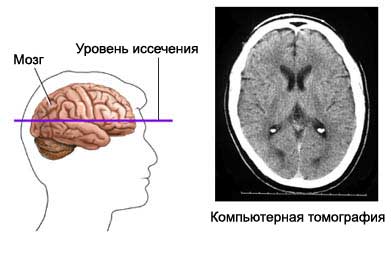CT scan – A survey by computed tomography
Description CT
Computed tomography uses X-ray technology to take pictures of structures inside the body. Compared with the conventional X-ray inspection, via computer tomography can get clearer images of organs, bones, soft tissue, blood vessels and other body parts.

In some cases, carried out computer tomography?
Some of the major applications of CT include:
- Studying the chest and abdomen;
- Determination of the size and location of the tumor;
- Diagnosis and treatment of problems with skeleton;
- Diagnosis of vascular disease;
- Planning for cancer radiotherapy;
- Determination of the venue Biopsy and other tests;
- Planning surgery;
- Identification of wounds and injuries.
Possible complications during computed tomography
Complications are rare, but no procedure does not guarantee the absence of risk. Before, how to perform a CT scan, you need to know about possible complications, which may include:
- Allergic reactions to the contrast agent;
- Damage to the kidneys contrast agent;
- Small risk of radiation exposure.
Computed tomography is not recommended during pregnancy.
Factors, that may increase the risk of complications:
- Allergy (If during the test a contrast material is used);
- Kidney problems (If during the test a contrast material is used).
How is the CT scan?
Preparation for the procedure
- Before the procedure, the doctor may ask the following:
- Examine the history of the disease;
- Does the patient drugs;
- Have allergies;
- Do pregnant or trying to get pregnant;
- Before the CT scan is necessary to follow the doctor's instructions in the, how to take the medication and how to limit their intake of food and fluids;
- In the medical facility:
- The doctor will explain the course of the test and answer your questions;
- It is necessary to remove his clothes and put on a hospital gown;
- Removes all jewelry, hairpins, dentures and other items, which can be seen on x-ray and complicate investigation;
- If the CT scan involves the use of a contrast agent, to take provided a contrast agent.
Procedure CT
The subject will be based on (usually on the back) on a movable bed. The bed will be moved under computer tomograph. Depending on the type of scan, into a vein in the arm or shoulder can be inserted the needle, through which it is fed saline and contrast agent. The doctor gives instructions through the intercom. The unit performs a series of images of the body region, which is studied. The bed can be moved a little when shooting at different angles.
After the CT scan
It will be necessary to wait, While experts Viewing pictures. In some cases, you need to perform additional photos.
How long will the computer tomography?
About 10-15 minutes
Will it hurt?
Can feel the warmth and redness, when the contrast agent is injected into a vein. Usually no pain is not felt.
The results of computed tomography
Pictures will be sent to a radiologist, which will examine them. The attending physician will receive the results and determine the best way to treat.
Communication with the doctor after a CT scan
After the test, you need to see a doctor, If the following symptoms:
- Symptoms of an allergic reaction (eg, hives, itch, nausea, swelling and itching of the eye, swelling of the throat, labored breathing);
- Any other painful symptoms.
